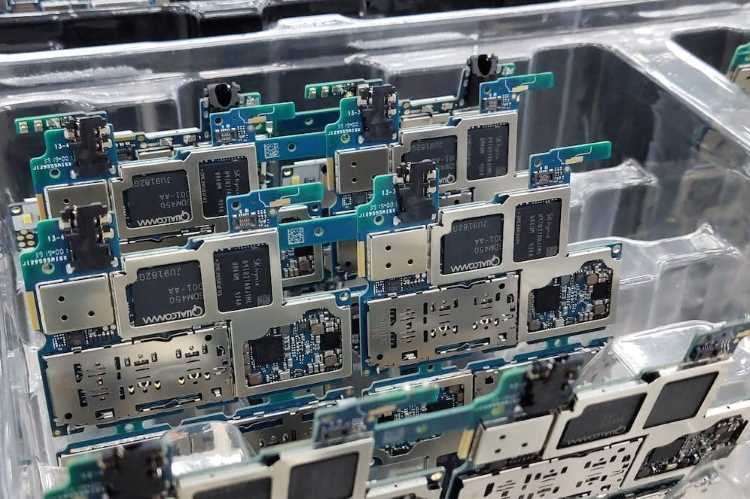The Union government had earmarked a hefty sum of Rs 1,97,000 crore for its ambitious production-linked incentive (PLI) schemes, of which a significant portion, or around Rs 41,000 crore, remains unutilised. This indicates that 80% of the total funds, or Rs 1,56,000 crore, are earmarked for incentives to qualifying companies over the coming years. The under utilisation of funds highlights a tepid response from companies in sectors such as textiles.
The shortfall in utilised funds is partly due to reductions in scheme allocations. For example, the financial outlay for the automotive and automotive components sector was initially announced at Rs 57,042 crore in 2020, but was significantly cut to Rs 25,938 crore in 2021 after reassessment by government officials who deemed the substantial allocation unnecessary. Additionally, some claims were rejected because companies did not meet the relevant criteria, leading to lower than anticipated scheme uptake.
READ | Rs 1 trillion innovation fund can unlock India’s investment lag
By adjusting allocations for various PLI schemes, the government saved around Rs 11,484 crore by December 2021, as reported by the Department for Promotion of Industry and Internal Trade. These savings could be redirected to other government departments needing funds for the PLI scheme, thanks to a provision made during the scheme’s design.
Launched in March 2020, the PLI scheme seeks to stimulate job creation, increase exports, and decrease imports across 14 key sectors, with incentives ranging from 4-10% on incremental sales over a high investment base. The scheme’s funding, spread over five to seven years, is expected to attract ₹3 lakh crore in investments and generate over 6 million new jobs, according to the Economic Survey 2022-23.
Need for PLI scheme overhaul
Midway through its implementation, the PLI scheme requires refinements to enhance its efficiency. The Global Trade Research Initiative (GTRI) highlighted slow incentive disbursements and recommended simplifying eligibility criteria to expedite benefits and bolster domestic manufacturing. It emphasised the need to prioritise domestic component manufacturing in sectors like electronics, where imports are rapidly growing.
Although the PLI was designed for 14 sectors, a significant portion of the funding has concentrated in just three: large-scale electronics, pharmaceuticals, and food products. Only eight sectors have claimed PLI benefits so far, including drones and telecom, while six others lag behind.
Given the varied success across sectors, the government could redirect funds to underdeveloped areas such as high-tech toys, AI, 3D printing, advanced phones, or high-quality man-made fibres. This redirection could also aim to attract anchor investors to these new fields, drawing on successful precedents.
The proposed redirection of funds to new sectors like high-tech toys, AI, and 3D printing is a welcome step. These sectors hold immense potential for job creation, technological advancement, and export growth. However, it is crucial to ensure that the redirected funds are accompanied by well-defined roadmaps and supporting infrastructure. For instance, the success of the PLI scheme in the mobile phone sector was bolstered by the government’s focus on creating domestic chip manufacturing capabilities. Similarly, fostering talent development, research and development initiatives, and robust quality control mechanisms will be essential for the success of PLI schemes in emerging sectors.
Additionally, there have been proposals for more PLI schemes. For example, DPIIT suggested a Rs 3,489 crore outlay for toys and Rs 2,600 crore for the leather and footwear sector. Other departments have proposed various schemes, many of which are under consideration.
Recently, the government nearly doubled allocations for five key industry segments to Rs 15,198 crore in the Interim Budget for FY25, covering over eight PLI schemes. This increase reflects the success of the mobile devices sector, prompting a 36% budget increase for mobile devices by the Ministry of Electronics and Information Technology from the Revised Estimate of FY24.
Encouraged by the mobile sector’s success, the government aims to boost the electric vehicle sector, with allocations for two-wheelers and four-wheelers increasing seven-fold to Rs 3,500 crore. The textile scheme is also being revised to address overly stringent rules and coverage gaps.
It is vital for the government to consider the unique challenges of each sector when designing or updating the PLI scheme. While the scheme’s objectives are commendable, its current structure limits effectiveness. Addressing these policy and systemic issues is crucial for maximising the scheme’s impact.
The PLI scheme, while ambitious in its vision, requires continuous monitoring and adjustments to maximise its impact. The government must adopt a data-driven approach, analysing sector-specific challenges. Regularly assessing the scheme’s effectiveness through independent evaluations and actively incorporating stakeholder feedback will be crucial for ensuring its long-term success. By addressing implementation bottlenecks, fostering inclusivity, and strategically directing resources, the PLI scheme can evolve into a powerful tool for driving India’s manufacturing ambitions and economic growth.

